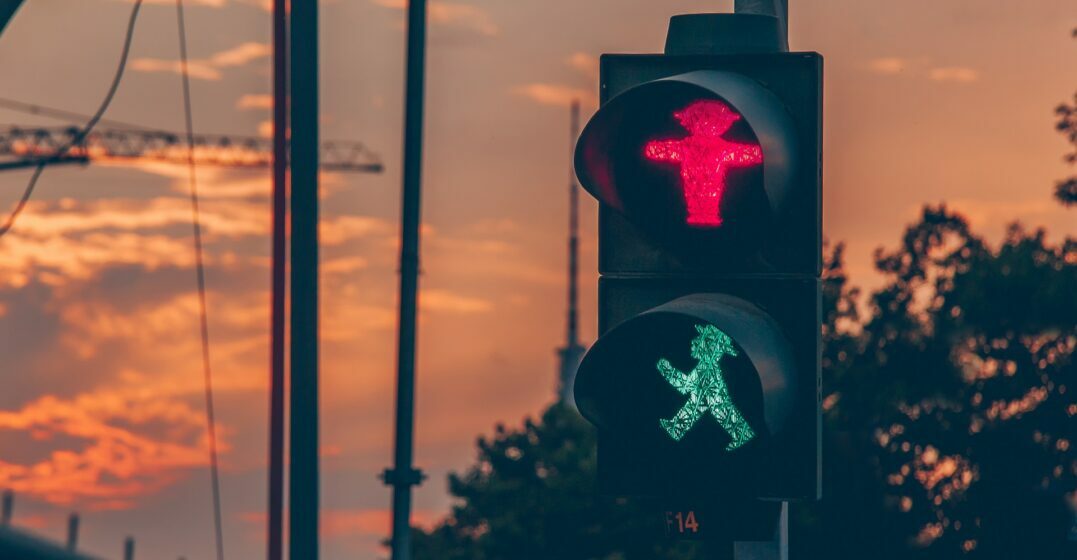Ostalgie in Berlin: a longing for a down-to-Earth East German past
Published on April 27, 2022 / Updated on January 9, 2024
The former capital of the GDR, East Berlin is the setting of several popular Ostalgie films, like Good Bye, Lenin! and Sonnenallee. The clothes, the furniture, the pickles and Mocca Fix drink – you can see it all in these films about a bygone era.
We all have nostalgia for the past. That brand of cereal you loved when you were a kid, the warm feeling for a board game you used to play with your friends in high school, the theme song for your favorite TV show growing up whose words you still know by heart. These small things become a part of us. Just like they did for people who grew up in the Deutsche Demokratische Republik (DDR), the German name for the German Democratic Republic GDR.
At midnight on October 3, 1990 the DDR ceased to exist as a separate country. A newly-unified Germany was born – and DDR ostalgie followed a few years later.
Although “democratic” was part of the country’s name, the GDR was by no means a democracy. A communist dictatorship with no free elections or freedom of movement, it was marked by scarcity of housing and goods, repression and suppression. Stasi (secret police) agents spied secretly on their neighbors and reported any activity deemed suspicious. People were thrown into prison for criticizing the government, forced into exile or shot trying to escape.
However, this doesn’t mean life in the GDR was a never-ending nightmare every second of the day. People fell in love, had their favorite TV shows and snacks and great times puttering down the street in the Trabant (“Trabi”) car they waited years to get.
A mix of the German words Ost (east) and Nostalgie (nostalgia), Ostalgie is the longing for everyday life in East Germany. These are the memories and products from the GDR’s gute alte Zeiten (good old days) that leave out its darker, more problematic political implications.
DDR nostalgia is definitely particularly pronounced in the former country’s Hauptstadt (capital city), Berlin. Here you can zoom around the city streets in a rented Trabi, buy a DDR flag at the former crossing point, Checkpoint Charlie, or go to a party where they play classic Ostrock bands, like the Puhdys. A definite trend among tourists, Ostalgia shops abound.
By the way, one way to (mostly) tell whether you’re in former West or former East Berlin is to take a look at the Ampelmännchen (the walk or do-not-walk symbol) when crossing the street. With his cute hat and cartoonish look, the East German Ampelmännchen was first replaced by the less whimsical West German version. However, following Ostalgie-fueled protests, the Ossis (East Germans) got back their little traffic light guy, which was even adopted in some former West Berlin neighborhoods and cities.
Nothing says nostalgia like tastes from the past. Here are some Ostalgie products from former East Germany that you can still buy all over Germany today.
Move over bread – Germany is really all about the Gurken (pickles). Spreewaldgurken, that is. Spreewaldgurken (pickles) comes from a region in Brandenburg whose soil is particularly good for growing pickles. And what pickles they are! Sweet and salty, with a delicious flavor and satisfying crunch, these pickles are so good they’re even protected by the EU. If you ever visit the Spreewald, you’ll find the pickles everywhere – they even have a Gurkenradweg (pickle bike trail) that takes you through the area and pickle stands galore. If you can’t make it to the Spreewald, you can also pick up a jar at the supermarket and enjoy.
In 1953, the Bautz’ner Senf & Feinkost GmbH made their first mittelscharfer Senf (mildly spicy mustard) in East Germany, and the rest is history! Made with horseradish, this mustard definitely has a spicy kick to it. Today, it makes up about 70 percent of all mustard sales in Germany, a true East German winner on the free marketplace.
In 1956, the government decided it was time to make a soda that would rival Coca Cola in the west, and Vita Cola was born. Like its Western rival, the recipe for this lemony soda was top secret, and it was a huge hit all over the GDR. When the Wall fell, many East Germans switched to the forbidden West brands, and Vita Cola’s popularity diminished. However, thanks to Ostalgie, it started to make a comeback in 1994. Today, it’s still holding its own in Germany’s soft drink market.
Invented by an East German baker in 1946, these light and airy crackers went into mass production a few years later. They were so popular, they couldn’t keep up with demand and priority was given to Kindergärten (daycare centers), which is why many kids in East Germany grew up eating it. Today, this cracker is still popular to eat with jam and soft spreads, or simply on its own. The name has a romantic twist to it: “Filinchen” was the nickname of the original baker’s girlfriend.
Whether it’s that Ostalgie souvenir you pick up in Berlin, or that snack that reminds you of your childhood in the DDR, Ostalgie isn’t going anywhere. And why should it? Although a country with a difficult past politically speaking, the GDR still has a lot to offer culture in modern-day Germany. So spread some Bautz’ner Senf on your Bratwurst and wash it down with a swig of Vita Cola just like they did in the old days!
